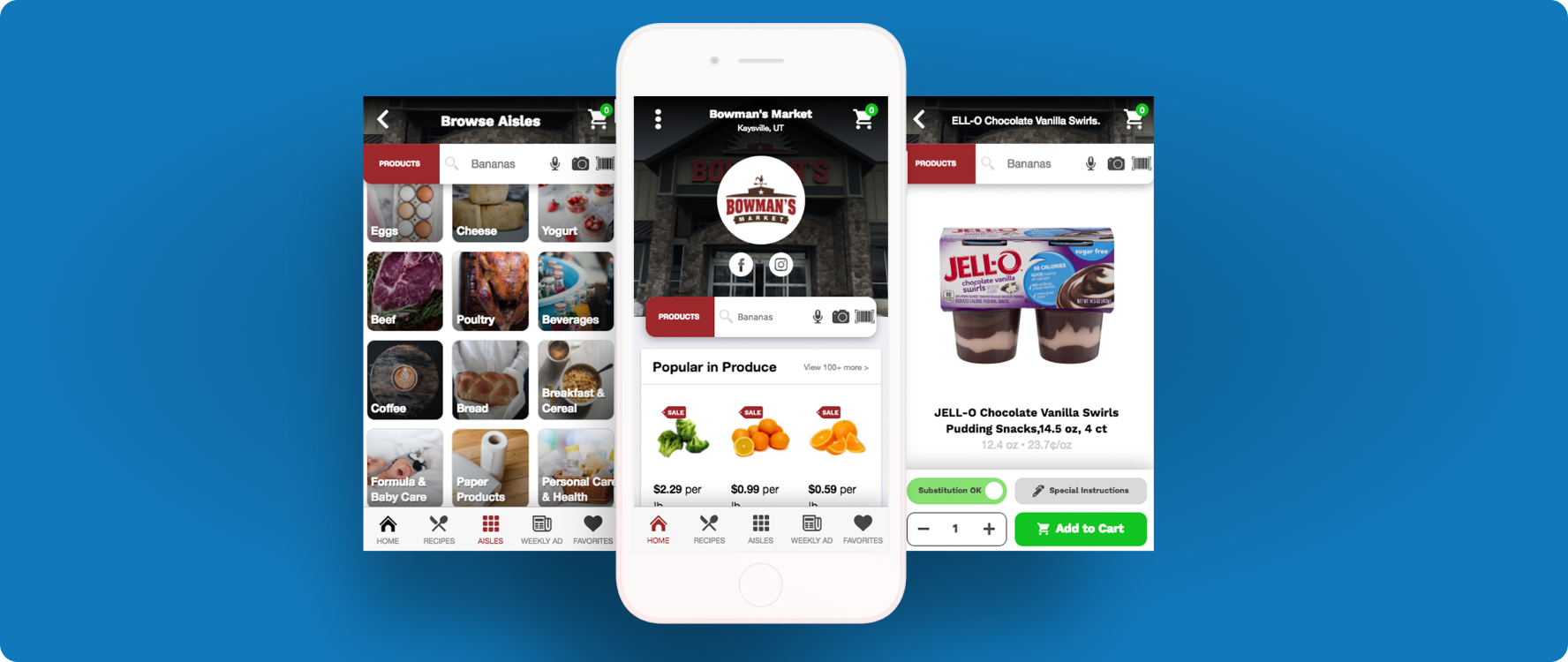2020 Online Grocery Explosion: Merely a Pandemic Blip?
-2.png)
5 Reasons to Stay Onboard The Ecommerce Train...and Buckle Up
Following historic meteoric growth in 2020, online grocery shopping is taking a momentary pause. But these 5 key indicators point to the growth engine resuming its heady pace in 2021 and beyond. And COVID may still have more fuel for the fire.
Grocery store and chain owners and industry pundits alike are taking a collective pause to analyze current trends and try to project the future growth and direction of online grocery shopping. Following historic growth and record-setting sales, online grocery revenues have retreated somewhat and settled in at a level 8% below the high water mark.
The Burning Question
The big question now is: was this sales run-up the beginning of a longer-term trend that we should bet on and ride into the future? Or was it merely a once-in-a-lifetime blip fueled by an unprecedented and unexpected worldwide pandemic?
The answer to that question is critically important for grocers planning strategies and investments to secure a solid future. For those already in the game, continued investment in ecommerce, particularly in the face of protracted labor shortages, represents a significant strategic commitment.
And for those waiting to take the plunge, the answer could be the key pivot point that dramatically changes the direction of successful multigenerational business models and community connection.
5 Reasons to Board the eCommerce Express
Despite the current pause in sales and growth, the long-term outlook for online grocery growth is highly robust. This goes deeper than merely forecasting rosy topline industry growth. It is rooted in underlying shifts in consumer demand and market forces that are driving fundamental changes in the way grocery brands are considered and products purchased.
These five trends* are at the heart of these changes, and represent compelling reasons for staying the online shopping course for those already engaged, or jumping aboard before the train leaves the station for those still hesitating.
Reason #1: Percentage of Sales - The Big Bite
At its peak, online grocery increased to 19% of overall grocery sales. This was achieved in less than one year from a standing start of less than 5% - the previous historical average. 19%, or $9.3B per month, is a very large number. While this record high was obviously driven by the pandemic, the more salient observation is where the numbers have settled in as the pandemic retreats.
Recent data shows online grocery purchases settling in at 11% of purchases, or around $7.0 billion per month. The key insight here is that while it’s not 19%, it is more than double the pre-pandemic average. In essence, online shopping got a 2X boost during the pandemic, and will continue at a much higher level of your sales into the future. It’s not going away anytime soon.
Reason #2: Heady Growth
In an industry that typically tracks overall economic growth, capitalizing on segments with above average growth is key to long-term success and survival. For that reason, the forecast growth for online shopping, without the benefit of a pandemic boost, is in itself unprecedented, and crucial to future planning.
Despite the current slowdown, online grocery sales are forecast to more than double over the next 5 years, to $250 billion in 2025. This represents a nearly 22% share of the overall grocery purchasing pie.
This five year growth forecast translates to nearly 20% average annual growth. At that rate, retailers who fail to fully embrace an ecommerce offering would experience roughly 25% erosion in their customer base over the next five years - a prospect that could be devastating to any five year business plan.
On the other hand, fully engaging in an online grocery platform will securely position you to benefit from the unusually high growth in this crucial segment of the market.
Reason #3: Rapid Shifts in Consumer Service Preferences
The rapid growth rate forecast for online grocery shopping is reflective of underlying shifts in consumer preference for more robust and personalized services in their shopping experience. Researchers identify these shoppers as ‘service seekers’ and ‘super saver fans’ as opposed to ‘traditionalist’ shoppers.
The data indicate rapid growth in the former two categories of shoppers, who increasingly look for shopping options outside their traditional stores, with a major portion of this through online sources. The graph below illustrates the rapidly diverging trends of traditionalists vs the other two categories.
This long-term trend will continue to erode the success and staying power of grocers who opt for a traditionalist-only strategy. Those who engage online will not only benefit from the resulting growth, but will be closer to the action, armed with better data and insight to make additional course corrections as trends continue to play out over time.
Reason #4: Expanding Marketing Channels
Related to Reason #3, this trend is reflective of the expanding world of choice online technology increasingly places at shoppers’ fingertips. Rather than shopping a single store for a broad variety of goods, shoppers increasingly spread their purchases over a broader selection of marketing channels, as illustrated in the graphic below, where pet supplies are purchased separately from grocery items, for example.
Accompanying this trend is the increasingly popular option of enrolling in a subscription for each of these different channels. This increases the level of convenience and service offered, as well as the loyalty and engagement of the shopper to that channel.
Full commitment to a leading-edge online shopping platform positions retailers to fully participate in this trend and enjoy the increased engagement and predictable repeat purchase that drives stable financial results.
Source: Subscription Demand Continues to Grow in Pandemic - Ordergroove (Dec 15, 2020)
Reason #5: COVID Deja Vu
Legendary baseball great Yogi Berra is famously quoted as saying “It’s like deja vu all over again.” In many ways, the COVID roller coaster may feel like a menacing deja vu, threatening to once again plunge us into lockdowns, restrictions and slowdowns.
While no one can predict even the near-future impacts of variant resurgence and hot-spot breakouts, being prepared with a solid online shopping option helps ensure that in the event your store’s doors or hours are restricted again, your shoppers have immediate and full access to your goods.
Beyond the Blip
While it may be hard to separate the magnitude of the pandemic-induced blip on overall ecommerce growth, the long-term effects and future potential are increasingly coming into focus. Forward thinking grocery retail executives will be best served by being in the thick of online grocery trends to not only reap the benefits of continued growth and adoption, but to improve agility in taking advantage of what comes next.
* Much of the data supporting this paper was supplied courtesy of Brick Meets Click


